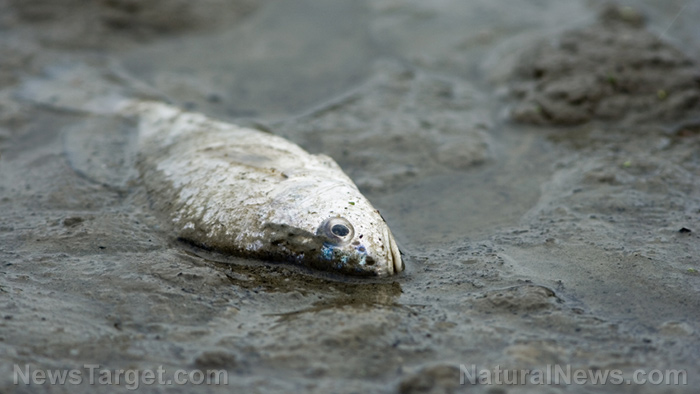
In the 1960s, the Cuyahoga River became infamous for becoming so polluted that it regularly caught fire. Now it suffers a different, subtler kind of water pollution. Decades of discharging chemicals into the waters of the Great Lakes have altered the hormones and metabolism of fish found in the Cuyahoga and two other rivers, according to an article on Great Lakes Echo.
Researchers warn that water pollution has caused changes in fish that live in the Great Lakes. A recent study covered 16 sites in three rivers, each of which emptied into a different lake, and found out that all three lakes contained high amounts of chemicals.
It comes as no surprise that the most affected river is the Cuyahoga, which flows through Cleveland and into Lake Erie. Many consider it to be a visible symbol of water pollution that prompted Congress to pass the Clean Water Act in 1972. (Related: Chemical contamination discovered in water supply at North Carolina military base… experts warn this could be the first of many.)
The Cuyahoga no longer catches fire, but it is still heavily polluted. Researcher Heiko Schoenfuss of the St. Cloud State University says today's pollutants include the likes of shampoo, laundry detergent, pesticides, and hormones.
His research team at the Aquatic Toxicology Laboratory tracked many of the pollutants to their sources. Depending on their locations, each site displayed different levels of concentration of water pollutants.
Hormones and pesticides come from farmlands, while other chemicals come from cities
Sites in upstream areas are located near agricultural regions. They show high levels of hormones fed to livestock and pesticide runoff from farmlands.
Downstream regions are heavily urbanized. The sites there contain large amounts of discharged chemicals from home septic systems and wastewater treatment plants.
Schoenfuss says the water pollutants are not directly lethal to fish in the rivers and Great Lakes. Instead, they cause small chemical changes in the reproductive and metabolic hormones of fish. These small changes will pile up as time passes by until they finally cause a negative effect on the ecosystem.
A good way to imagine this long-term effect is fiddling with your home thermostat. If someone raised or lowered the temperature by a couple of degrees, you might not notice it until the end of the month, when your bill arrives.
Schoenfuss assures fishermen that fish caught in the waters of the Great Lakes and their rivers remain safe to eat for now. He even says he would eat one fished out of the Cuyahoga itself.
The Cuyahoga has made big progress, but it still has a long way to go
Long-time Cleveland resident Agnieszka Wooten believes the Cuyahoga River has come a long way since the first time she saw it 30 years ago. She relates how animals avoided the river when she moved into the area.
Several years after she settled in and the Clean Water Act started to make real progress, Wooten noticed bald eagles, beavers, and otters began reappearing near the Cuyahoga. She believed the river water became clean enough for the animals at that point.
Wooten herself often goes on hikes through the riverside or paddles boats in the Cuyahoga.
Michael Murray, a researcher with the National Wildlife Federation, confirms that the water quality in the Cuyahoga has vastly improved. The return of the bald eagle is significant because the species is very sensitive to pollution.
Local residents remained worried about pollution, especially if it can be seen with the naked eye. Wooten says she comes across trash like condoms, plastic bottles, and sanitary napkins during her hikes upstream, especially after heavy rains.
Find out if your river or lake is safe at CleanWater.news.
Sources include:
Please contact us for more information.




















